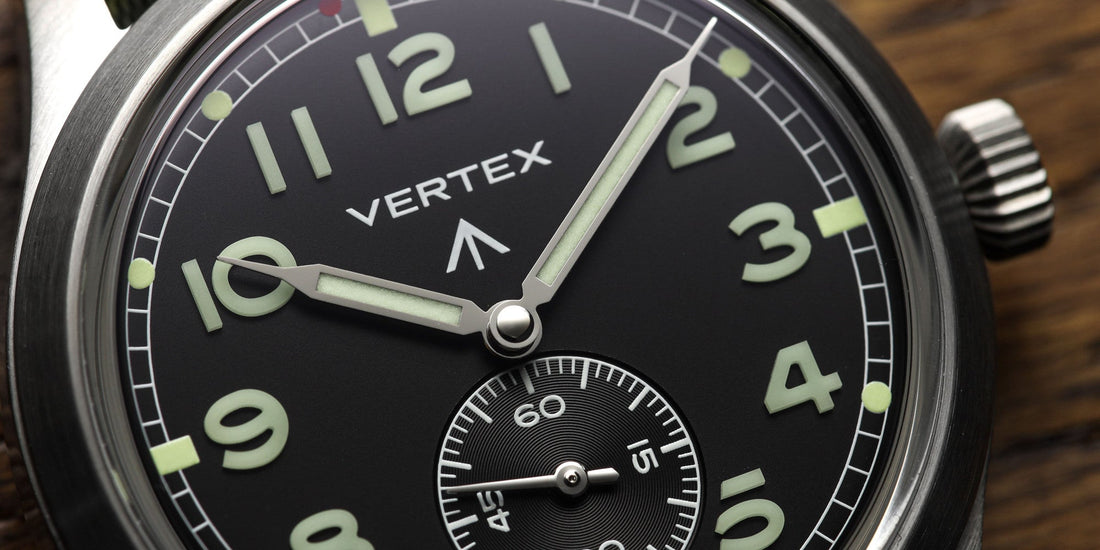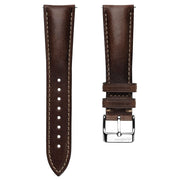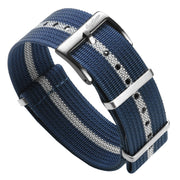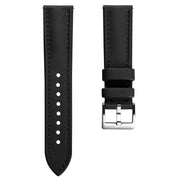I didn’t wake up one day and decide to swear allegiance to the Queen’s—sorry, King’s—horological empire. There was no Churchillian voice in my head urging me onward, no Union Jack waving dramatically in the wind. My obsession with British watch brands just… happened.
It started with a Farer. Specifically, the Cayley Verde on a green leather strap—aviation-inspired, yes, but with a splash of color that said, “I’m classy, but I know how to party.” It looked like the kind of watch James Bond might wear to a garden party after three martinis—dashing, but a bit tongue-in-cheek. I was sold.
Then came the Studio Underd0g Watermel0n. I bought it because it made me laugh and check the time—an underrated combo. Also, a few friends have (lovingly?) said I dress like a watermelon, so maybe this was destiny. Either way, it’s a mechanical watch with a pink-and-green dial that says, “Yes, I take horology seriously. But also, fruit.”
After that? The CWC Mellor 72. My first RedBar club watch. I bought it because everyone else in the group had one—and because, when I was a kid and my mom hit me with the classic, “If your friends jumped off a cliff, would you?” my answer was always, “Yes. And I’d make it look good.” This special edition swapped the “4” for our RedBar flat-R logo, added a barber-pole seconds hand, and threw in some engraved flair on the back and strap. I call it peer pressure with personality.
Then it happened: I traded my Omega Speedmaster Reduced—yes, that Speedy—for a Vertex M100A. I know, I know. Sacrilege. But hear me out. The Vertex looked tougher, felt cooler, and—most importantly—didn’t come with the crushing weight of lunar expectations. Perhaps the thing I came to admire most about a perfect black field watch is that I can pair it with the craziest straps imaginable, and it just works.
I admire how Don Cochrane, Vertex’s owner, avoided recreating their Dirty Dozen watch as a museum piece. Instead, he evolved the brand, threading its military heritage into something modern and wearable. That kind of thoughtfulness spoke to me.
And now? Now I’m wearing an Isotope Moonshot. Sounds like a 1960s NASA project, but it’s a very real, very British watch designed by José Miranda (who is very Portuguese)—a guy who pulls inspiration from comics and sci-fi, which, conveniently, is also where my writing background lives. I vibed with that watch the moment José gave me a proper peek, over a year before its release. It went on to be my favorite watch of 2024. It’s quirky, bold, and unlike anything else I own. It also confirmed something I hadn’t consciously noticed before:
I’ve accidentally built a collection that would make a Beefeater nod in approval.
And no, this wasn’t some elaborate master plan I cooked up whilst gettin’ lit in one of the red phone booths found in London—which I’m pretty sure are exclusively used for gettin’ lit now. British brands just kept resonating with me—quietly, consistently, and, okay, sometimes with fruit motifs.
Now that WatchGecko has me reflecting on it all, I realize there’s something deeply communal about British watchmaking. The stories feel more intimate. The brands feel like they actually like each other. Dangerous concept, I know.
When I started tallying up how many British watches I’ve owned, I figured it was time for a pilgrimage to British Watchmakers’ Day. I wanted to see for myself how brands as wildly different as Studio Underd0g and Vertex could occupy the same space, and not try to claw each other’s lugs off.
To my surprise (and possibly yours if you’re not UK-based), I learned that many of the brands I love are part of the British Watch and Clock Makers Alliance, founded by Mike France of Christopher Ward and Roger Smith of…THE Roger Smith. I discovered this while planning the trip, and upon my arrival in London for the convention, the whole ecosystem began to make sense.
What stood out immediately wasn’t the product. It was the camaraderie.
I’m not saying American or other independent brands lack community—there are plenty of WhatsApp groups, Facebook chats, and late-night DM chains. But the vibe among British brands felt different. Tangible. Collaborative. Less Hell’s Kitchen, more British Bake-Off.
British watch brand heaven aka British Watchmakers' Day
The real proof came after hours, chatting with brand owners I’ve come to know. These folks talk to each other. They share ideas. They cheer each other on. Sure, there’s a little gossip floating around (don’t worry, I collected some), but the Alliance helps keep things civil. Think of it as a horological Mean Girls scenario where no one gets told, “You can’t sit with us.”
I went to London expecting to learn more about watches. I left understanding why British brands keep ending up on my wrist. It’s not just the designs—or the heritage, or the humor, or even the fruit. It’s the spirit. The sense that these brands are building something together, not just side by side.
Maybe that’s what drew me in without me realizing it: a quiet rebellion against the idea that watchmaking has to be solitary, secretive, or self-serious. British watchmakers are proving that you can be both competitive and collaborative, traditional and experimental, serious and fun.
In all honesty, I took one trip to London and felt like I had more friends there than I do at home. I started working with some lovely British brands, continued my work with others, and got a gig writing for you all! It was a pretty awesome trip, if I do say so myself.
So no, I didn’t mean to become a British watch guy. But honestly? I’m not mad about it. Just don’t ask me to trade in my coffee for tea or pronounce it “a-loo-mini-yum”. A man has to draw the line somewhere.




















